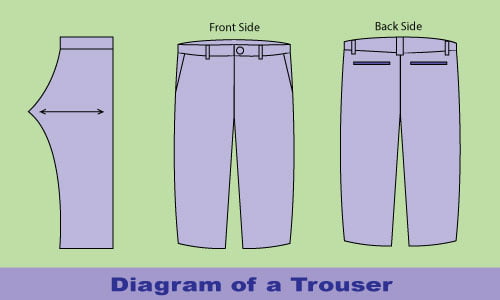101 Infographic: Woven Fabric Types, Properties & Applications
Woven fabric is created by interlacing two perpendicular sets of yarns – the warp (lengthwise) and weft (crosswise) – at right angles using a loom. This ancient textile construction method produces fabrics with exceptional strength, dimensional stability, and versatility, which makes it the foundation of the global textile industry.
What Are Woven Fabrics?
Woven fabrics represent one of the oldest and most fundamental textile construction methods known to humanity. The basic principle involves the systematic interlacement of two sets of yarns at right angles, creating a stable and durable fabric structure that has served countless applications throughout history.
Fundamental Weave Types
Understanding the basic weave structures is essential for anyone working in the textile industry. Each weave type offers unique characteristics that make it suitable for specific applications. Here are the six fundamental weave types that form the backbone of textile manufacturing:
Plain Weave
The simplest and most common weave structure featuring a basic over-under pattern. This fundamental weave creates strong, stable fabrics with excellent durability. Common examples include muslin, canvas, and poplin, making it ideal for everyday clothing and home textiles.
Twill Weave
Characterized by diagonal lines or ridges across the fabric surface, twill weaves offer superior drape and wrinkle resistance. Popular examples include denim, gabardine, and serge, making this weave perfect for pants, jackets, and upholstery applications.
Satin Weave
Creates a lustrous, smooth surface with long floats that reflect light beautifully. Examples include satin, sateen, and charmeuse fabrics. This weave is prized for luxury garments, lingerie, and formal wear due to its elegant appearance and fluid drape.
Basket Weave
A variation of plain weave using multiple yarns woven together as one unit, creating a checkered appearance. Examples include oxford cloth and monk’s cloth. This weave offers enhanced texture and is commonly used for shirts and casual wear.
Leno Weave
Features twisted warp yarns that create an open mesh structure with excellent air permeability. Common examples include gauze and cheesecloth. This weave is perfect for medical textiles, curtains, and applications requiring breathability.
Jacquard Weave
Enables complex figured patterns and intricate designs through computerized loom control. Examples include brocade, damask, and tapestry fabrics. This sophisticated weave is used for luxury home furnishings and decorative textiles.
Manufacturing Process
The production of woven fabrics involves a sophisticated series of steps that transform raw fibers into finished textiles. Each stage is crucial for ensuring the final fabric meets quality standards and performance requirements.
Fiber Preparation
Raw fibers undergo cleaning, carding, and combing processes to remove impurities and align fibers properly. This critical first step ensures consistent yarn quality and determines the final fabric’s characteristics.
Yarn Spinning
Prepared fibers are twisted together using spinning machines to create continuous yarns with desired strength, texture, and thickness. The spinning process directly impacts the fabric’s durability and appearance.
Warping
Warp yarns are wound onto a large beam in parallel arrangement, creating the foundation for the weaving process. Precise tension control during warping is essential for uniform fabric structure.
Sizing
Warp yarns receive a protective coating of starch or synthetic polymers to increase strength and reduce friction during weaving. This temporary treatment prevents yarn breakage and ensures smooth production.
Weaving
Weft yarns are interlaced through raised and lowered warp yarns using modern shuttleless looms or traditional shuttle looms. Advanced computer controls ensure precise pattern formation and consistent fabric quality.
Finishing
The final stage involves desizing, scouring, bleaching, dyeing, and mechanical finishing processes. These treatments enhance the fabric’s appearance, performance, and end-use properties.
Key Fabric Properties
Woven fabrics possess distinctive characteristics that make them suitable for various applications. Understanding these properties helps manufacturers and designers select the appropriate fabric for specific end uses.
High Tensile Strength
The interlaced structure provides superior load-bearing capacity and resistance to tearing, making woven fabrics ideal for heavy-duty applications.
Dimensional Stability
Minimal shrinkage and distortion during washing and use, maintaining garment fit and appearance over time.
Abrasion Resistance
Excellent durability and longevity due to the strong interlacement of warp and weft yarns, reducing wear and extending fabric life.
Limited Stretch
Maintains shape under stress due to the stable grid structure, providing consistent fit and appearance in garments.
Variable Drape
From crisp to flowing textures, woven fabrics can be engineered to achieve desired draping characteristics for different applications.
Thermal Properties
Heat retention and breathability vary with fiber composition and weave structure, allowing customization for comfort requirements.
End Applications
The versatility of woven fabrics makes them indispensable across numerous industries. From fashion to technical applications, these textiles serve diverse market needs with reliable performance.
Global Market Insights
The woven fabric industry represents a significant portion of the global textile market, with continued growth driven by technological innovations and expanding applications across various sectors.
Future Innovations
The textile industry is experiencing rapid technological advancement, with innovations in materials, manufacturing processes, and applications driving the evolution of woven fabrics toward smarter, more sustainable solutions.
🧠 Smart Textiles
Integration of sensors, conductive fibers, and IoT capabilities for health monitoring and interactive applications. These intelligent fabrics can respond to environmental changes and user needs in real-time.
🌱 Bio-based Fibers
Development of sustainable alternatives using agricultural waste, algae, and lab-grown materials. These eco-friendly options reduce environmental impact while maintaining performance standards.
🤖 AI-Driven Manufacturing
Machine learning optimization of weaving patterns, quality control, and predictive maintenance. Artificial intelligence enhances efficiency and reduces waste throughout the production process.
🔬 Nanotechnology Integration
Nano-coatings for enhanced properties like water resistance, antimicrobial effects, and UV protection. These microscopic treatments add functionality without compromising fabric comfort.
♻️ Circular Economy Solutions
Advanced recycling technologies and design-for-disassembly approaches for sustainable textile lifecycle. These innovations enable closed-loop manufacturing and waste reduction.
🎨 Digital Printing Revolution
Direct-to-fabric printing with reduced water usage and unlimited design possibilities. Digital technologies enable customization and rapid prototyping for niche markets.
Quality Standards & Testing
Maintaining consistent quality in woven fabric production requires adherence to international standards and rigorous testing protocols. These standards ensure safety, performance, and reliability across global markets.
Conclusion
Woven fabrics continue to be the cornerstone of the textile industry, offering unmatched versatility, durability, and performance across countless applications. As technology advances and sustainability becomes increasingly important, the future of woven textiles looks bright with innovations in smart materials, eco-friendly production methods, and advanced manufacturing techniques.
Understanding the fundamentals of woven fabric construction, properties, and applications is essential for professionals in the textile industry. Whether you’re a designer, manufacturer, or end-user, this knowledge enables informed decision-making and optimal fabric selection for specific requirements.
The continued evolution of woven fabrics, driven by consumer demands and technological capabilities, promises exciting developments in functionality, sustainability, and performance that will shape the future of textiles for generations to come.
You may also like: What is woven Fabric?



